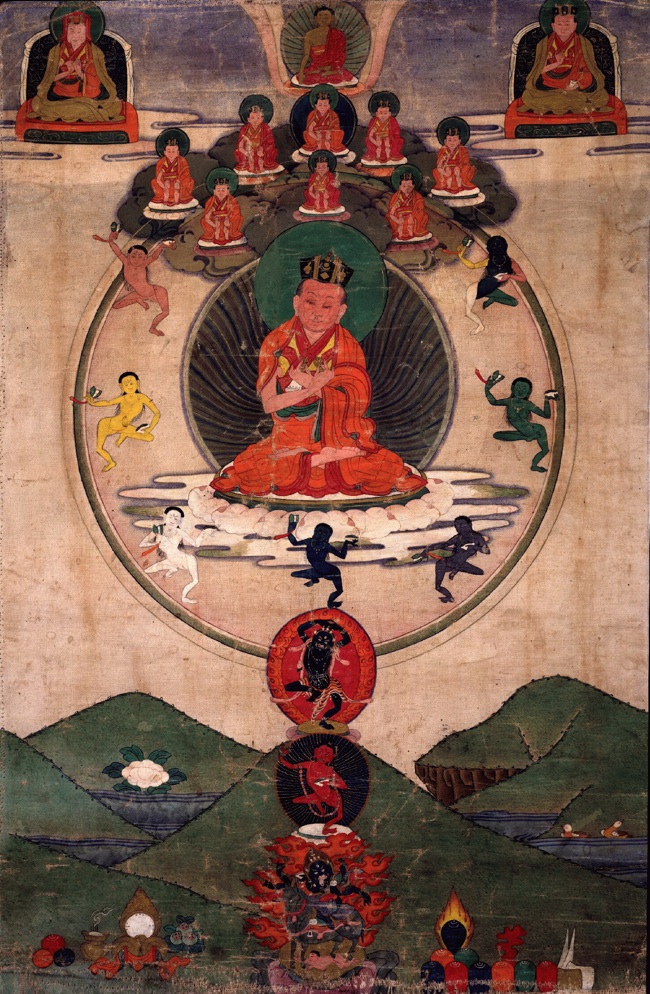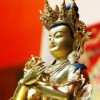This beautiful painting, from the collection of the Rubin Museum of Art, New York, is in the Karma Gardri style of Eastern Tibet and dates from the 19th Century. It is based on the Guru Yoga in Four Sessions (Tib. tun shi lami naljor) meditation composed by the 8th Karmapa Mikyö Dorje (1507–1554). This practice is taught in Diamond Way Buddhist centres, after one has completed the Four Foundational Practices (Tib. ngondro) (click on image to enlarge).
In his book “Rainbow Painting” which concerns aspects of the development and completion phases of meditation, Tulku Urgyen Rinpoche says:
“The unity of the development and completion stages means that the forms of the deity, palace and so forth are all manifest, meaning visible, in your experience while at the same time nondual awareness remains undistracted. There is no real division between manifestation and awareness. Understand that the unity of the development and completion stages is, in essence, the unity of experience and emptiness.
Karmapa Mikyö Dorje, the great Vajradhara of the Kagyü lineage, is the chief figure in the famous Guru Yoga in Four Sessions. One of its supplications says: “Visible, yet empty; empty, yet visible. The indivisible unity of being visible and empty is the form of the guru. I supplicate the guru’s form.”… What does this mean? It means that there is perception occurring, something is perceived, although, at the same time, that which perceives is empty. This indivisible nature of perceiving while being empty is, itself, the form of the guru. This is the ultimate enlightened Body and realizing this is the unity of development and completion.”
Other posts which may be of interest :
Tags: 8th Karmapa, Karma Gardri, Mikyo Dorje, Thangkas, Tulku Urgyen Rinpoche




 Follow
Follow